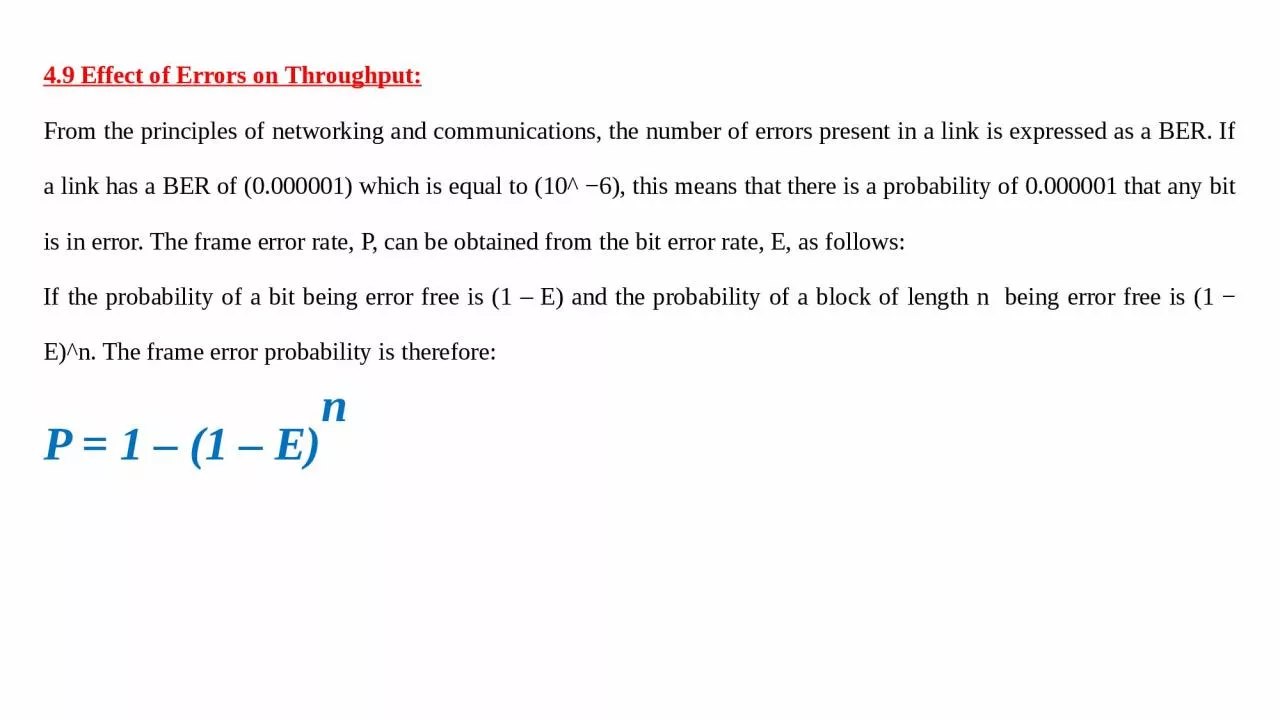

From the principles of networking and communications the number of errors present in a link is expressed as a BER If a link has a BER of 0000001 which is equal to 10 6 this means that there is a probability of 0000001 that any bit is in error The frame error rate P can be obta ID: 1040087
Download Presentation The PPT/PDF document "4.9 Effect of Errors on Throughput" is the property of its rightful owner. Permission is granted to download and print the materials on this web site for personal, non-commercial use only, and to display it on your personal computer provided you do not modify the materials and that you retain all copyright notices contained in the materials. By downloading content from our website, you accept the terms of this agreement.
1. 4.9 Effect of Errors on Throughput:From the principles of networking and communications, the number of errors present in a link is expressed as a BER. If a link has a BER of (0.000001) which is equal to (10^ −6), this means that there is a probability of 0.000001 that any bit is in error. The frame error rate, P, can be obtained from the bit error rate, E, as follows:If the probability of a bit being error free is (1 – E) and the probability of a block of length n being error free is (1 − E)^n. The frame error probability is therefore:P = 1 – (1 – E)n
2. Example 1:A frame of data of length 2048 bits is transmitted over a link with a BER of 10^ (- 4).Determine the probability that a frame will be received erroneously.Solution:Since the BER, E = 0.0001, then Probability of a bit being error free is equal to (1 – E) = (1 − 0.0001) = 0.9999. Since the frame length, n, is 2048 bits then the probability of the frame being error free is (1 – E) = (0.9999)2048 = 0.815.The probability of a frame being in error is given by:P = 1 − 0.815 = 0.185.